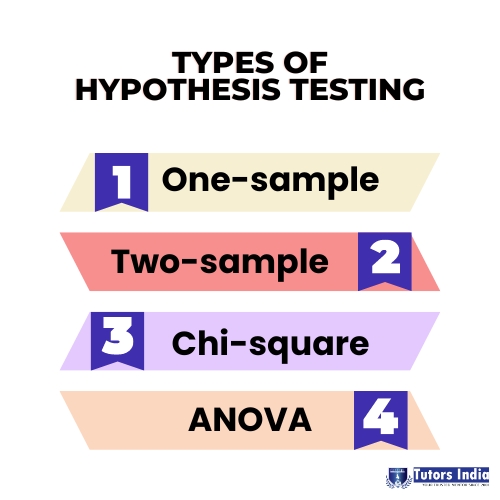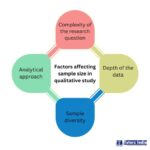What is Hypotheses testing and what are its types?
Introduction
Data has become indispensable to research; presently, researchers deal with big data. Analytical methods are needed to handle the challenges posed by extensive data. The earliest and the most commonly used statistical analysis is hypothesis testing, whose first use dates back to 1710 by John Arbuthnot. However, the modern form of statistical testing is from the combined work of R. A. Fisher, Jerzy Neyman and Egon Pearson. Hypothesis testing finds its application in business, marketing, finance, biology, medicine, social science and psychology. For example, in marketing, it can be used to identify changing consumer preferences and determine a drug’s effectiveness in medicine.
Types and examples of hypothesis testing
The principal underlying hypothesis testing is to determine whether a data sample is typical or atypical compared to the population, assuming that the population’s underlying hypothesis is correct. A statistical technique called hypothesis testing is used to assess a claim or hypothesis about a population parameter using sample data. It involves setting up a null hypothesis, the claim being tested, and an alternative hypothesis, which is the opposite of the null hypothesis. The next step is to calculate the test statistic and compare its p-value to the significance level to decide whether to accept or reject the null hypothesis (Emmert-Streib F, 2019).
There are several types of hypothesis testing, which are as follows:

1.One-sample hypothesis testing: This type of test compares the mean of a sample to a known value or a hypothesised value. In ideal circumstances, this strategy has the advantage of controlling the Type I error rate (the likelihood of rejecting a true null hypothesis) (Francis, G., 2023).
Example: A researcher wants to test whether the average height of students in a school is 6 feet. The null hypothesis is that the average height is 6 feet, and the alternative hypothesis is that it is not equal to 6 feet.
2. Two-sample hypothesis testing: The most common type of hypothesis testing, this test compares the means of two different samples to determine whether they are significantly different (Hedgier S., 2022).
Example: The average salary for male and female employees will be compared to see if there is any discernible difference. While the null hypothesis states that there is no difference in the average salary, the alternative hypothesis is that there is a difference.
3.Chi-square test: If there is a significant correlation between two categorical variables, it will be revealed by this kind of test. The Chi-square test has two specific goals: to determine whether there is no correlation between two or more groups and populations and to determine how closely the observed data distribution matches the predicted distribution (Turhan N.S, 2020).
Example: A researcher wants to test whether a significant association between smoking status and lung cancer exists. For this research null hypothesis states that there is no association between smoking status and lung cancer, and the alternative hypothesis states that there is an association.
4.ANOVA (analysis of variance): This kind of test is used to examine whether the means of three or more groups differ significantly from one another (Lakens D., 2021).
Example: A researcher wants to ascertain whether a statistically significant difference exists in the mean test scores from three teaching approaches. There is no difference in the mean score, according to the null hypothesis. On the contrary, the alternative hypothesis is that at least one of the average scores is different from the others.
Conclusion
Hypothesis testing is a crucial aspect of statistical analysis that allows researchers to draw valid conclusions about populations based on sample data. Although the earliest, hypothesis testing is still widely used in various disciplines. One-sample, two-sample, chi-square and ANOVA are the types of hypothesis testing that find their applications for analysing quantitative studies.
Tutors India offers statistical services for research in various fields, for statistical analysis is a critical component of quantitative research. In addition, its team of experts assists in complete dissertation writing and offers publication support and editing services enabling students to publish their manuscripts in reputed journals.
References
- Emmert-Streib F, Dehmer M. Understanding Statistical Hypothesis Testing: The Logic of Statistical Inference. Machine Learning and Knowledge Extraction. 2019; 1(3):945-961. https://doi.org/10.3390/make1030054
- Francis, G., Jakicic, V. Equivalent statistics for a one-sample t-test. Behav Res 55, 77–84 (2023). https://doi.org/10.3758/s13428-021-01775-3
- Simon Hediger, Loris Michel, Jeffrey Näf, On the use of random forest for two-sample testing, Computational Statistics & Data Analysis, 10.1016/j.csda.2022.107435, 170, (107435), (2022).
- Turhan, N. S. (2020). Karl Pearsons Chi-square tests. Educational Research and Reviews, 15(9), 575–580. https://doi.org/10.5897/err2019.3817
- Lakens, D., & Caldwell, A. R. (2021). Simulation-based power analysis for factorial analysis of variance designs. Advances in Methods and Practices in Psychological Science, 4(1), 1–14. https://doi.org/10.1177/2515245920951503

 Previous Post
Previous Post Next Post
Next Post